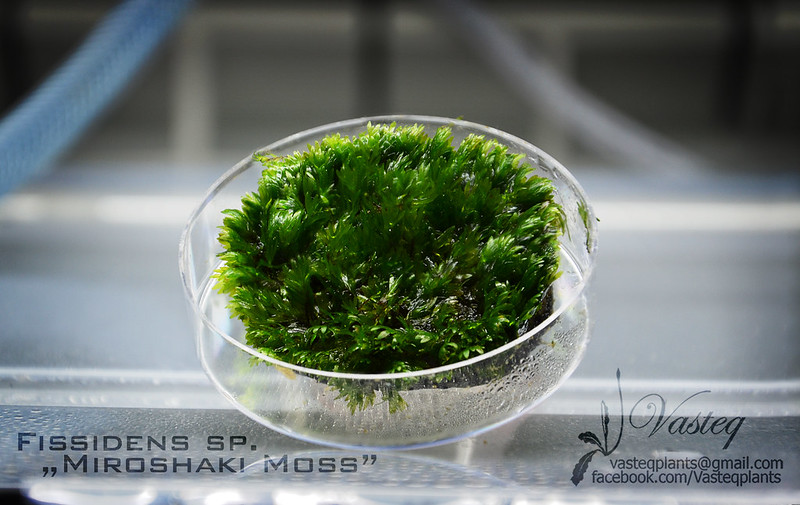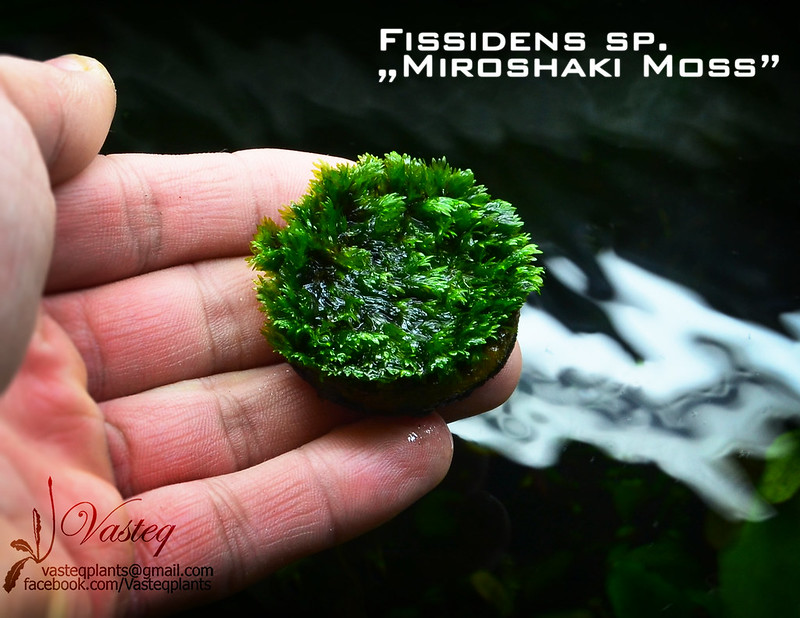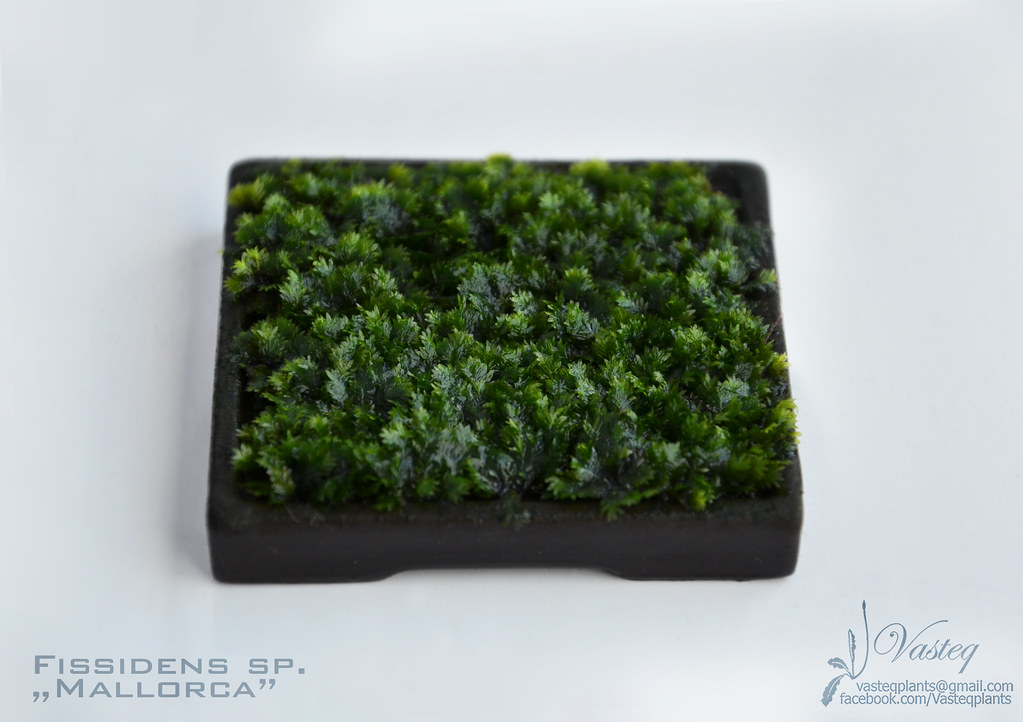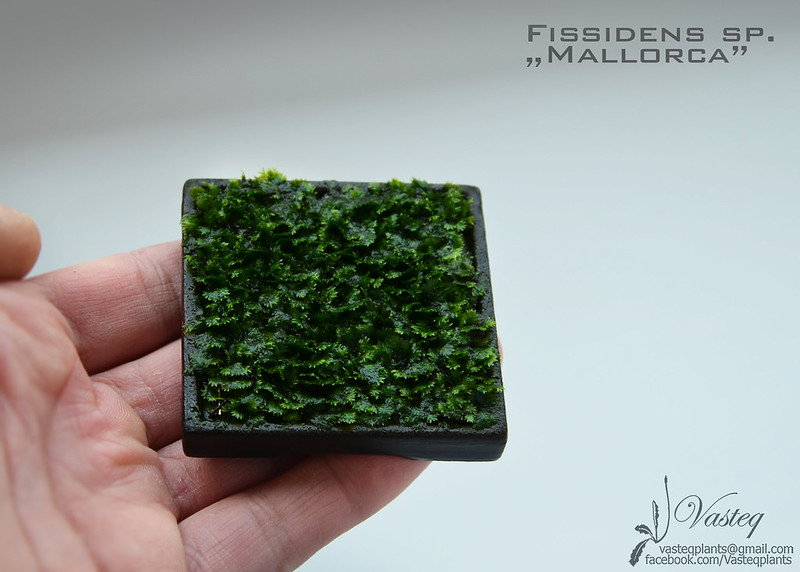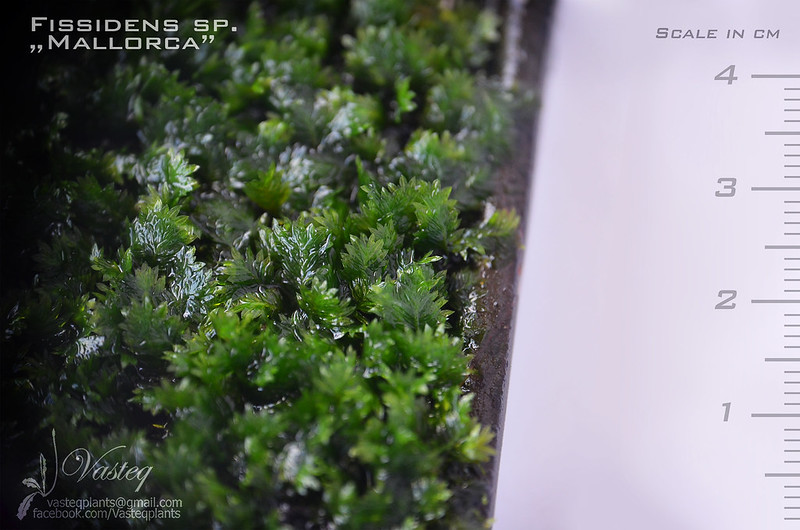App installieren
How to install the app on iOS
Follow along with the video below to see how to install our site as a web app on your home screen.

Anmerkung: This feature currently requires accessing the site using the built-in Safari browser.

Du verwendest einen veralteten Browser. Es ist möglich, dass diese oder andere Websites nicht korrekt angezeigt werden.
Du solltest ein Upgrade durchführen oder ein alternativer Browser verwenden.
Du solltest ein Upgrade durchführen oder ein alternativer Browser verwenden.
Interessante Moose fürs Aquarium (engl. Text)
- Starter*in vasteq
- Datum Start
vasteq
GF-Mitglied
It is common moss in tropical Africa, it grows in a shady locations. Plagiochila integerrima is a big and strong foliose liverwort.
You can attach it into piece of wood, coconut or lava rocks. It grows best at moderate light intensity and good nutrient and CO2 supply. Nutrient deficiency leads to narrow, pale stems. It grows very well in soft to medium hard water. It looks very much like Plagiochila sp. Cameroon moss (also known under name Hanegoke sp. Cameroon). It also comes from Africa. There is a presumption that they are the same mosses. However a trained eye can notice some subtle differences.

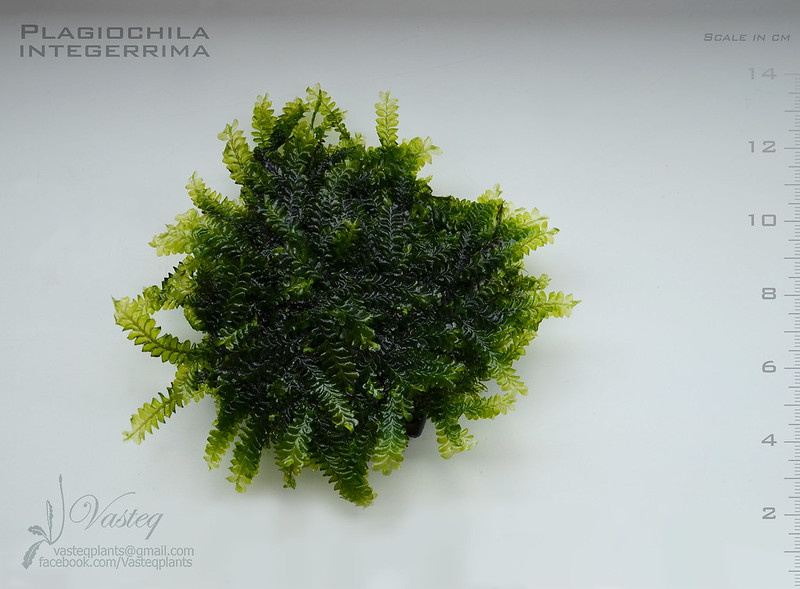
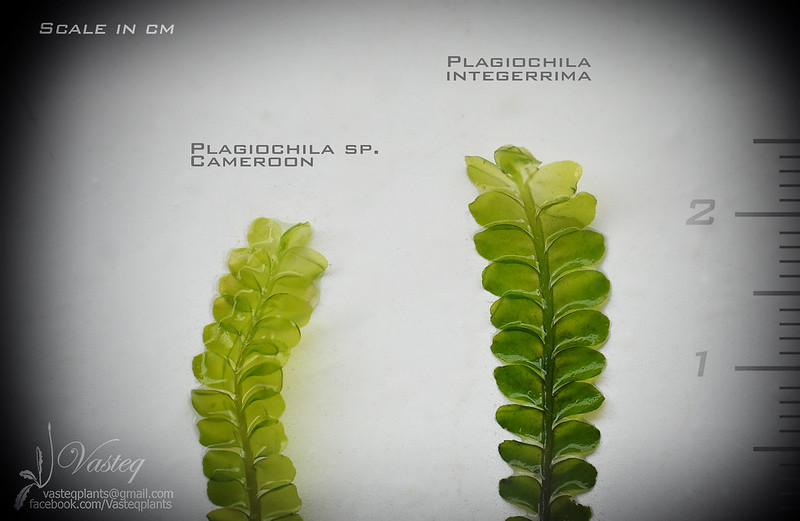
vasteq
GF-Mitglied
It is probably one of the oldest liverwort in aquarium. Its first name was Blepharostoma Trichophyllum. In time name has been defined as Heteroscyphus zollingeri (defined by Prof. S.R. Gradstein, Universitet Göttingen).
However, until today it often occurs under the tradename Pearl Moss, or Mini Pearl Moss. Fast rate of growth. In good conditions, its branches are thick and leaves are curled. In the worst conditions it can look completely different. It likes CO2.
However, until today it often occurs under the tradename Pearl Moss, or Mini Pearl Moss. Fast rate of growth. In good conditions, its branches are thick and leaves are curled. In the worst conditions it can look completely different. It likes CO2.
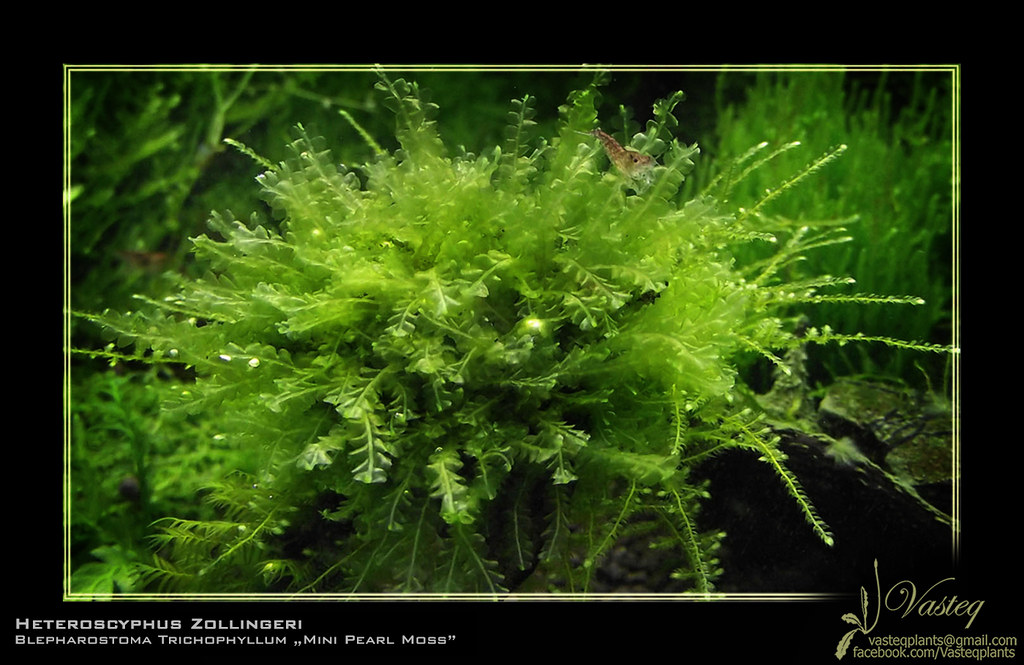
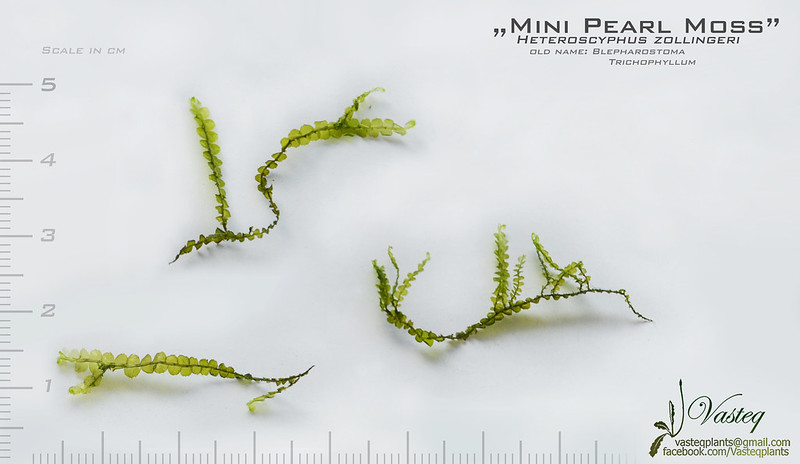
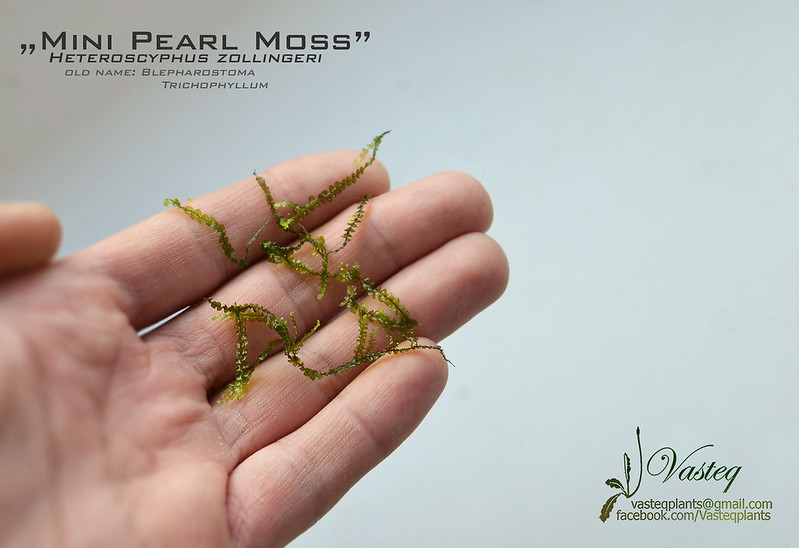
[mod]Merged to One Thread[/mod]
That should be possible.
(May I kindly remind you that we are a german-speaking board? Not all members of ours are capable of understanding english like this. Your information is worthwhile nevertheless.)
(May I kindly remind you that we are a german-speaking board? Not all members of ours are capable of understanding english like this. Your information is worthwhile nevertheless.)
vasteq
GF-Mitglied
Fissidens sp. Grandifrons var Planiccaulis
One of the most magnificent fissidens found in aquarium. The unique appearance: dark green twigs and oblique their arrangement makes it is pleasing to the eye. It can not be confused with any other Fissidens. In nature, it can be found in streams, rivers. Growth slow.



One of the most magnificent fissidens found in aquarium. The unique appearance: dark green twigs and oblique their arrangement makes it is pleasing to the eye. It can not be confused with any other Fissidens. In nature, it can be found in streams, rivers. Growth slow.



vasteq
GF-Mitglied
Fissidens Grandifrons
Another interesting Fissidens. I'm not sure of the name of this species, as mentioned earlier Fissidens Grandifrons var Planiccaulis completely different from him. In botanical books you can found only one Grandifrons and it looks like var Planiccaulis. This species looks similar to F. Nobilis but its branches are denser, more tightly arranged and seems to be softer than nobilis.

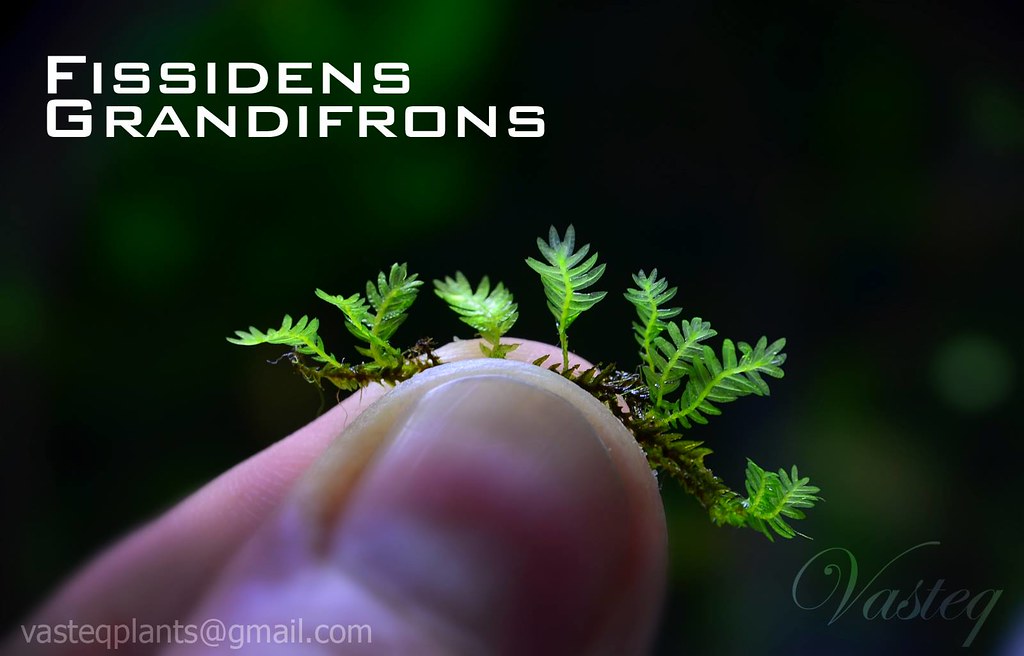
Another interesting Fissidens. I'm not sure of the name of this species, as mentioned earlier Fissidens Grandifrons var Planiccaulis completely different from him. In botanical books you can found only one Grandifrons and it looks like var Planiccaulis. This species looks similar to F. Nobilis but its branches are denser, more tightly arranged and seems to be softer than nobilis.


How can one distinguish between e.g. all the different variations of Fissidens moss? I know I own two, a small- and a big-leaves one. But I'd never ever recognize them in one of your pictures or descriptions. It would be interesting to see all of the variations next to another for better comparison.
vasteq
GF-Mitglied
Yes, it's true. Sometimes it is difficult to distinguish them from each other. Therefore, these variations are intended only for fanatics of fissidens because sometimes the differences between them are only subtle. But the trained eye will notice the differences between them. Someday I will try to get a picture comparing all the fissidens varieties.

